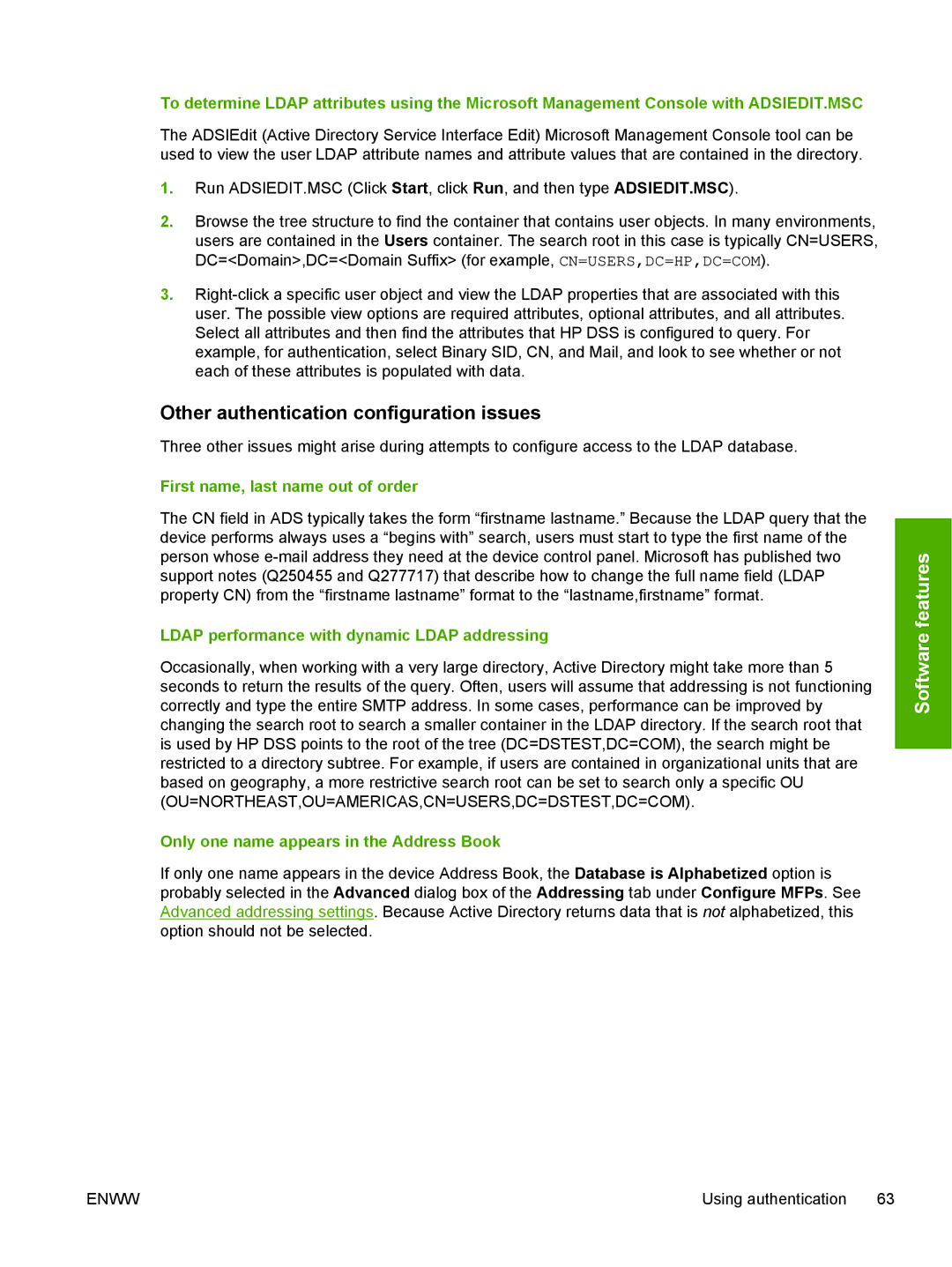To determine LDAP attributes using the Microsoft Management Console with ADSIEDIT.MSC
The ADSIEdit (Active Directory Service Interface Edit) Microsoft Management Console tool can be used to view the user LDAP attribute names and attribute values that are contained in the directory.
1.Run ADSIEDIT.MSC (Click Start, click Run, and then type ADSIEDIT.MSC).
2.Browse the tree structure to find the container that contains user objects. In many environments, users are contained in the Users container. The search root in this case is typically CN=USERS, DC=<Domain>,DC=<Domain Suffix> (for example, CN=USERS,DC=HP,DC=COM).
3.
Other authentication configuration issues
Three other issues might arise during attempts to configure access to the LDAP database.
First name, last name out of order
The CN field in ADS typically takes the form “firstname lastname.” Because the LDAP query that the device performs always uses a “begins with” search, users must start to type the first name of the person whose
LDAP performance with dynamic LDAP addressing
Occasionally, when working with a very large directory, Active Directory might take more than 5 seconds to return the results of the query. Often, users will assume that addressing is not functioning correctly and type the entire SMTP address. In some cases, performance can be improved by changing the search root to search a smaller container in the LDAP directory. If the search root that is used by HP DSS points to the root of the tree (DC=DSTEST,DC=COM), the search might be restricted to a directory subtree. For example, if users are contained in organizational units that are based on geography, a more restrictive search root can be set to search only a specific OU (OU=NORTHEAST,OU=AMERICAS,CN=USERS,DC=DSTEST,DC=COM).
Only one name appears in the Address Book
If only one name appears in the device Address Book, the Database is Alphabetized option is probably selected in the Advanced dialog box of the Addressing tab under Configure MFPs. See Advanced addressing settings. Because Active Directory returns data that is not alphabetized, this option should not be selected.
Software features
ENWW | Using authentication 63 |
